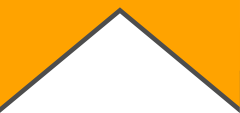Try the #506 section of your local library for books on scientific organizations. Science goes from #500-599 at the library, applied science goes from #600-#609 and engineering goes from #620-629.
The core subjects are math, physics, chemistry, geology and biology and from this, there are easily 100 subspecialties, if not more. The major fields are:
Acoustics.
Agriculture.
Agroforestry.
Anatomy.
Arboriculture.
Artificial intelligence.
Astronomy.
Astrophysics.
Biochemistry.
Biology.
Biomedical science.
Biophysics.
Biotechnology.
Botany, plant science.
Cartography, mapping science.
Cell biology.
Ceramic science.
Chemistry.
Chiropody, podiatry, foot health.
Computer science.
Cybernetics, robotics.
Dentistry.
Diet and nutrition.
Earth science.
Ecology.
Electronics.
Environmental health.
Ergonomics.
Food science.
Forestry.
Genetics.
Geochemistry.
Geology.
Geophysics.
Horticulture.
Information science.
Linguistics.
Marine biology.
Materials.
Mathematics.
Medical laboratory science.
Medicine.
Metallurgy.
Meteorology.
Microbiology.
Molecular biology.
Neuroscience.
Oceanogrpahy.
Optics.
Pathology.
Pharmacology.
Physics.
Physiology.
Polymer science.
Psychology.
Radiography.
Zoology.
Because science is always in demand at home in research and operations as well as overseas everywhere, employment prospects are always good for scientists.
At the library, the science section is as follows:
500. Pure Sciences.
503. Dictionaries, Encyclopedias, etc.
507. Study and Teaching.
510. Mathematics.
520. Astronomy Related Sciences.
530. Physics.
540. Chemistry Related Sciences.
550. Earth Sciences.



Share This eBook: